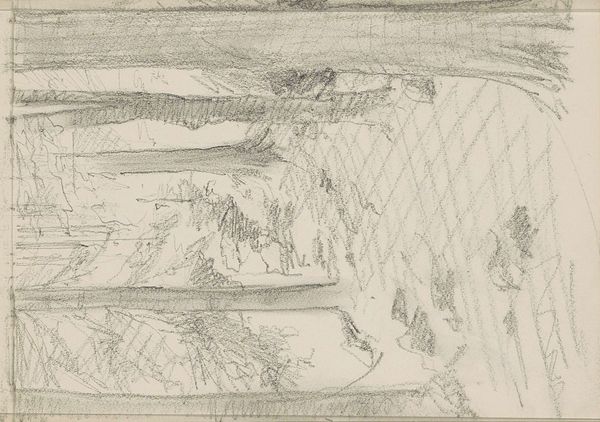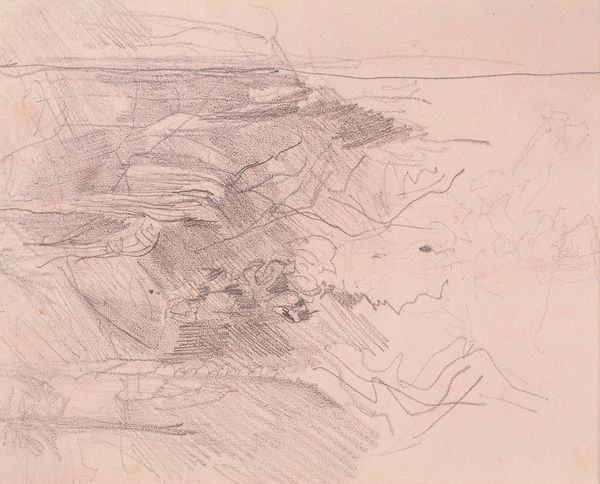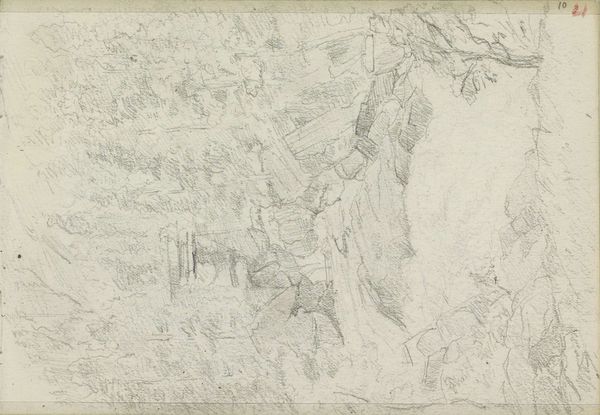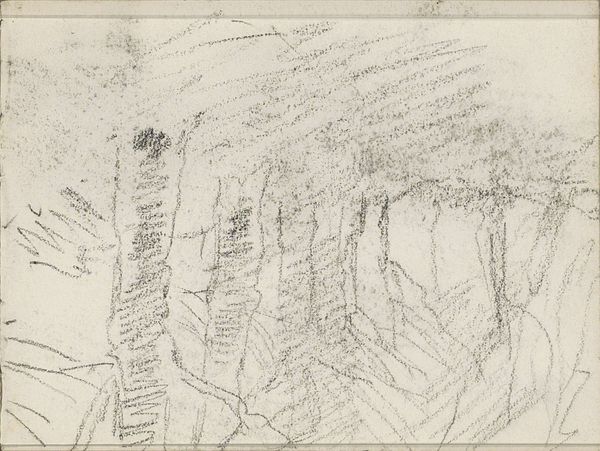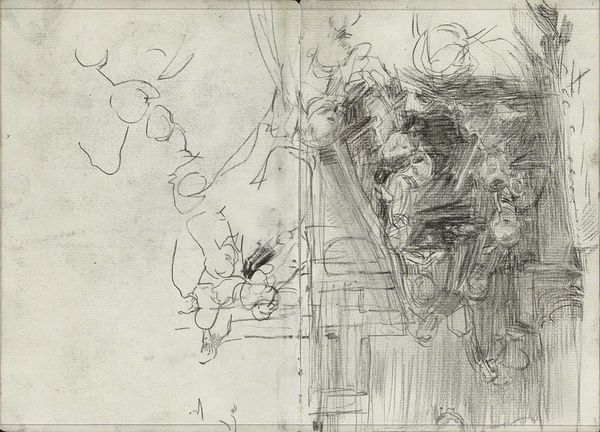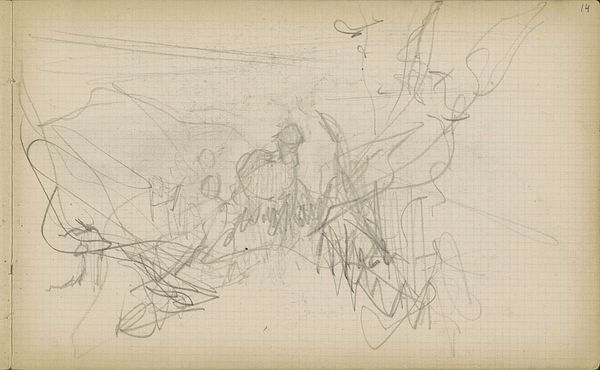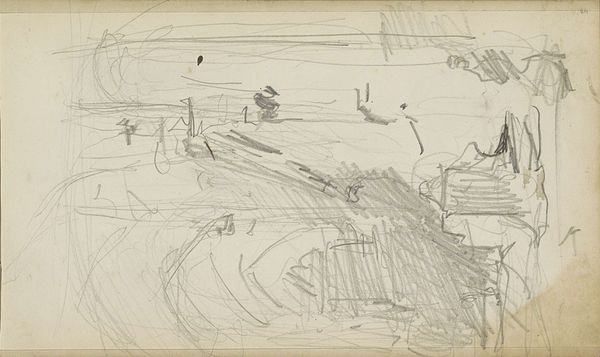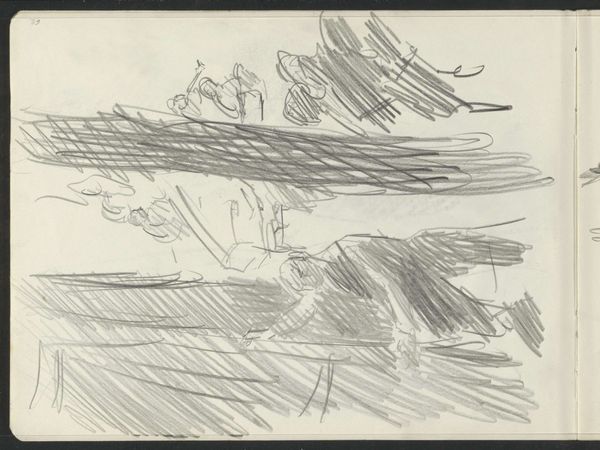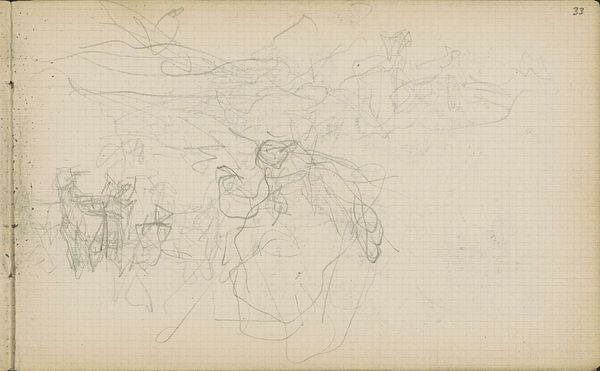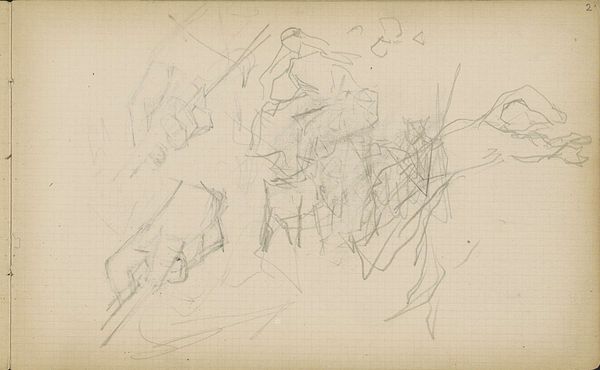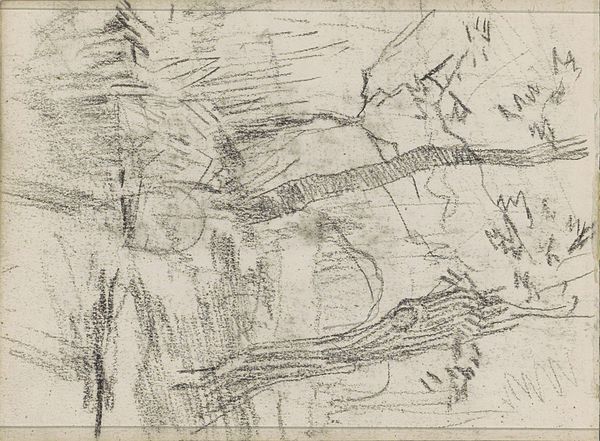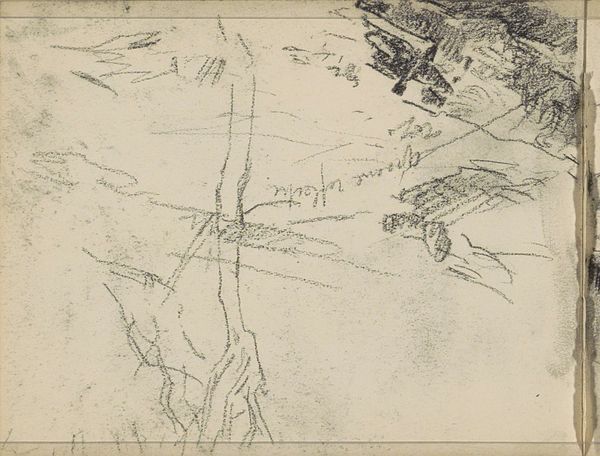
drawing, pencil
#
drawing
#
landscape
#
pencil
#
post-impressionism
#
realism
Copyright: Rijks Museum: Open Domain
Editor: This drawing, titled "Keien en bomen op een heuvel," which translates to "Stones and Trees on a Hill," was done by Jozef Israëls around 1885 to 1902, using pencil. It looks incredibly raw and immediate, a sketch rather than a finished piece, but what stands out is how textured it feels even with such simple materials. What’s your take? Curator: It's interesting to consider this from a materialist perspective. A seemingly simple pencil sketch like this reveals much about the artist's process and the social context of art production at the time. How was pencil manufactured in that period? Who had access to drawing materials like this? Was this an exercise in preparation for a larger painting? Editor: Those are excellent points I hadn’t considered! I suppose I was only thinking about it formally. The medium influences our perception of its finality, or lack thereof. What about its social elements? Curator: Consider the role of the artist in society. Jozef Israëls achieved considerable success during his lifetime. Could a drawing like this serve as evidence of artistic labor, connecting Israëls to the burgeoning market for original works? Or perhaps a connection to everyday labor that reflected realism as a popular style? What does a quick sketch reveal about class and accessibility during the period when this was made? Editor: I think I had been so focused on the image itself, and the artist’s vision. You've made me realize that appreciating the *making* of the artwork— the materials and the social conditions— offers such an entirely new lens. Curator: Precisely! By shifting our focus to production and material culture, we start asking deeper questions about art's place in society. What’s the societal impact? Editor: Exactly! I see it now. It’s about more than just what's on the page, but the hands, materials, and contexts that put it there.
Comments
No comments
Be the first to comment and join the conversation on the ultimate creative platform.
